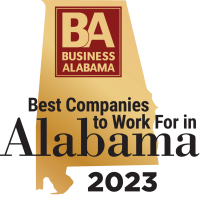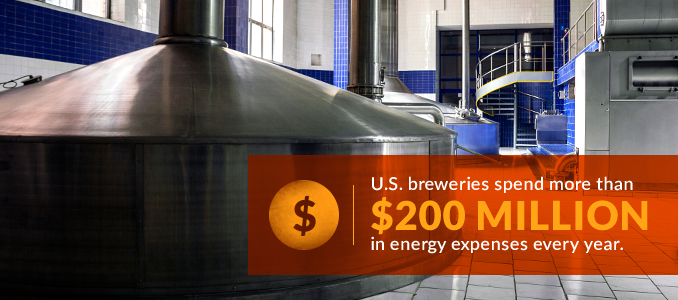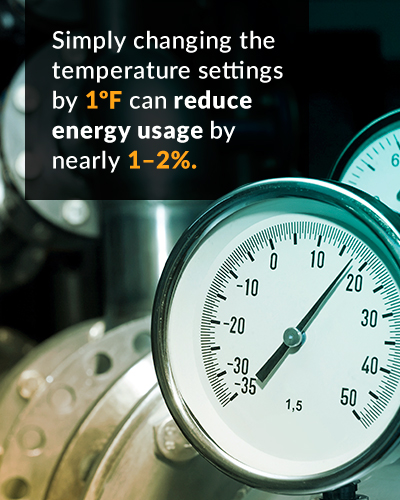Chapter 5: How to Increase Energy Efficiency in Microbreweries and Distilleries
With all the thermal and electrical energy that’s consumed in the complex brewing and distillation processes, energy efficiency at breweries and distilleries is a growing concern for those looking for long-term cost savings. They key in reducing the overall energy expenditure is to achieve this goal without sacrificing the quality of the finished product.
With U.S. breweries spending more than $200 million in energy expenses every year, ibndustry leaders are now employing new methods to reduce water consumption, govern electrical energy usage and employ more environmentally friendly alternatives to produce their product. Some solutions involve reducing expenses right away, while you can employ other methods over the long term.
Whether it’s investing in more efficient technologies, employing new methods for reducing energy usage or taking a look at what can be done with your existing equipment, every penny saved is a penny earned, making energy efficiency an important priority for breweries both large and small. Here are a few ways breweries can save money and increase energy efficiency in their daily operations.
Conduct an Overall Energy Audit
If the idea of analyzing each component of your operation seems a bit overwhelming and you don’t know where to start, consider the benefits of hiring a professional to conduct an energy audit. An energy audit is a great place to start and will help you determine how much energy you’re using, how much you’re wasting and what kind of measures can be implemented at your brewery to increase your overall operating efficiency in the future.
Not only will the energy audit give you a better understanding of where energy is being consumed, but it can also help you increase the overall performance of your equipment in a cost-effective way. Through maintenance and optimal performance, you’ll be able to increase both productivity and the longevity of the systems that are critical to your operation.
Review Boiler and Steam Requirements
Boiling the wort accounts for about 25-35 percent of the total energy usage for most breweries. Even though a portion of fuel is used to generate the heat conducive for boiling wort, it’s important to make sure that as little as possible is being wasted.
One method for increasing efficiency during the boiling process is to inspect your equipment for leaks, which can allow steam and thermal energy to escape, and seal them if any are found. As with most equipment involving heat, proper insulation can reduce unwanted heat loss and lower the total usage of fuel, saving you money. As with leakages, higher than necessary pressure can also cause a loss in steam. In order to prevent this, adjust pressures for optimal performance while still meeting the requirements of the boiling process.
Revisit Refrigeration and Cooling Temperatures
Refrigeration consumes a large portion of the total electrical energy used by most breweries, averaging about 35 percent of the total electricity expenditures. However, there’s often energy being wasted, which can be rectified by optimizing your temperature. Simply changing temperature settings by 1 degree Fahrenheit can produce a reduction of nearly 1-2 percent in energy usage.
As with boiling, insulation applied to piping can provide an additional advantage by further reducing waste. Inadequate insulation, leaving doors ajar and allowing warm air to invade cold storage areas can all contribute to waste. By reducing these particular aspects, you could save up to 20 percent on the total electrical energy used for cooling. Compressors not operating at their full efficiency cause further energy loss in the refrigeration process.
Monitor Your Compressed Air System
Coupled with the high demand of electrical energy needed to produce compressed air, and the importance a compressed air system plays in both production and bottling, maintaining your system’s efficiency is essential for reducing expenses. Compressed air systems typically consume around 10 percent of the total electricity used by most breweries.
Ensuring that your compressed air system does not exceed the needed pressures, and that it’s running at optimal efficiency, is a way to cut your energy bills each year. Another source of loss can come from leaks in a compressed air system. Even a small leak could prove costly over time. Identifying, repairing and conducting routine maintenance inspections for leaks provides a great benefit, resulting in thousands of dollars in savings each year.
Some of the easiest ways to reduce energy consumption when working with compressed air systems is to turn off the compressor when it’s not in use and to not use the compressed air when more efficient alternatives may be available.
Identify Any Energy Waste in Packaging and Bottling
As with compressed air systems, energy is expended during the packaging process on the bottling line. Everything involved in the process, from filling the bottles to placing the products on shipping pallets, consumes energy. Identifying waste and employing methods to make the process more efficient can help save you money and reduce your overall energy consumption.
An effective way to achieve this is to only run conveyer systems when needed. Another effective method is to optimize the line efficiency at your brewery.
Determine if Brewing Can Be More Efficient
Determine which a few methods can help increase the efficiency of your brewing process without sacrificing the quality of your product. Since the preparation of the equipment consumes energy, brewing batches without much downtime in between can result in a more efficient operation.
Another way to reduce expenses is to create a more concentrated wort, which allows the brewer to dilute the beer later on when bottling. This could reduce the total energy consumption per barrel, increase the volume brewed and improve consistency in the product without influencing the taste.
Table of Contents
- Crafting Great Beer and Spirits
- Chapter 1: A Brief History of Beer — An Ancient Beverage
- Chapter 2: Nature's Contribution — The Ingredients
- Chapter 3: The Art of Brewing and Distillation
- Chapter 4: The Tools of the Trade — Vessels, Stills, and Compressors
- Chapter 5: How to Increase Energy Efficiency in Microbreweries and Distilleries
- Chapter 6: How to Save Money in Production Line with Better Bottling Practices
- Chapter 7: The Microbrewing and Craft Beer Movement
- Chapter 8: Evolution of Crafting Beer and Whiskey



